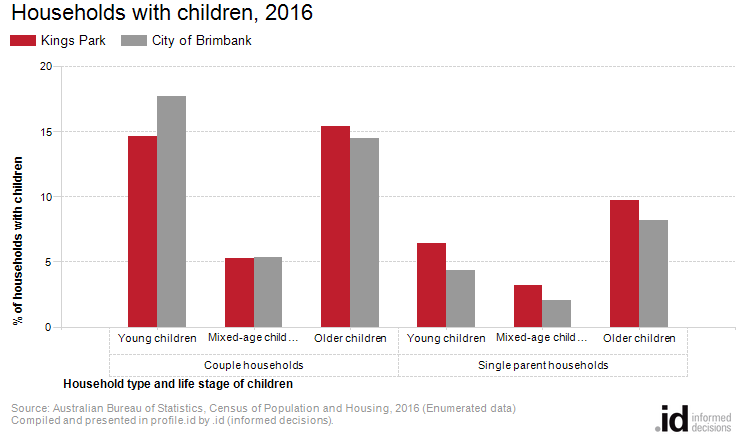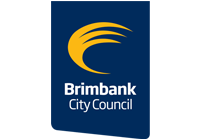Kings Park
Households with children
There are 401 couples with young children in Kings Park in 2016, comprising 14.6779% of households.
Households with Children require different services and facilities than other household types, and their needs change as both adults and children age. When many families in an area are at the same stage in their individual lifecycles, it creates a suburb lifecycle. Knowing where a suburb is in a cycle of change helps planners make evidence-based decisions about the demand for services both now and in the future.
For Households with Children in Kings Park, life stage is based on the age of children in the household. The age of the parent(s) is not taken into account.
- Young children: Children aged under 15 only
- Mixed age children: One or more children under 15 and one or more children over 15 (must have 2 or more children)
- Older children: Children aged 15 and over only
To continue building the story, Kings Park's Household data should be viewed in conjunction with Household Size, Age Structure and Dwelling Type.
Derived from the Census question:
'What is the person's relationship (to each other person in the household)?'
Households
Source: Australian Bureau of Statistics, Census of Population and Housing (opens a new window) 2011 and 2016. Compiled and presented by .id (opens a new window)(informed decisions).

Compiled and presented in profile.id by .id (informed decisions).

Compiled and presented in profile.id by .id (informed decisions).
Dominant groups
Analysis of the families with children in Kings Park in 2016 compared to City of Brimbank shows that there was a smaller proportion of couples with young children, and a larger proportion of couples with older children.
Overall, 14.7% of total households with children were couple with young children, and 15.4% were couples with older children, compared with 17.7% and 14.5% respectively for City of Brimbank.
There were a larger proportion of single parent households with young children and a larger proportion of single parent households with older children. Overall, the proportion of single parent households with young children was 6.4% compared to 4.4% in City of Brimbank while the proportion of single parent households with older children was 9.7% compared to 8.2% in City of Brimbank.
Emerging groups
Between 2011 and 2016, the number of households with children decreased by 62 households or 4.0%.
The largest change in households with children in this area between 2011 and 2016 was:
- Couples with older children (-60 households)
